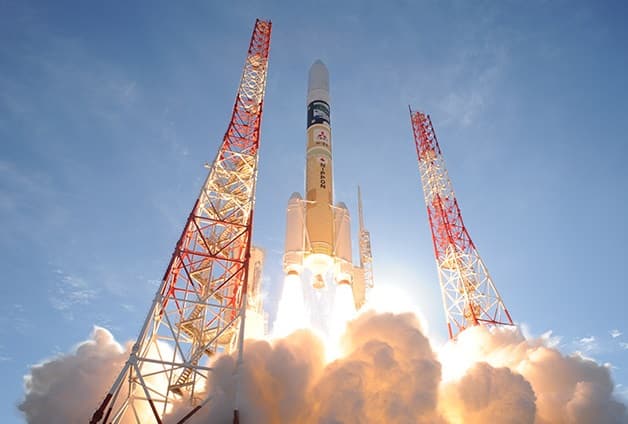
Society 5.0
Wireless Watch Japan debuted in 2001 as a weekly email newsletter, and since then mobile has become essential to daily life worldwide. We were fortunate to be based at ‘ground zero’ in Tokyo and diligent in pursuing this space from the beginning. It’s been an honour and pleasure to serve! Today, we are ‘good to go’ for the next big adventure. It’s been busy – always interesting – and we look forward to building for the next cycle, Beyond 2020. Can you imagine, Whooosh.. what it will be like in another 20 years from now?
While 5G and IoT (Ai-xR) tech. will continue to be key topics, we see a far larger story emerging from Japan: Society 5.0. As with Wireless Watch, our position remains: to discover, analyse and report the unique and valuable intelligence on activity here with strong potential to impact global markets. Please take a moment to review the brief below. Hopefully, we have your attention from past efforts and there is genuine interest in the future. Ideally our new ‘5×5’ approach will be worthy in your opinion for time spent. Indeed; the ®evolution Continues!

Brief: Society 5.0
It’s likely you have heard of Industry 4.0, focused on digital and the enterprise, pioneered in Germany and introduced at the Hanover Fair in 2011. The Japanese approach goes well beyond, with a stated scope – and supporting funding – that is truly breathtaking. As with the made-in-Japan mobile internet era of the late 90s, we expect Society 5.0 developments to have significant implications globally over the coming years. We have followed the progress of this project, since it was announced in early 2016, collecting vast amounts of material along the way. Suffice to say there’s real potential, and yet just like the early days of mobile, it’s a universal issue evolving off-the-radar in Japan.
Japan’s Science, Technology and Innovation Council launched in 1995, with Basic Plans set on five-year terms. Budgeted at 1% of GDP, operating directly within the Cabinet Office and chaired by the Prime Minister with all relevant ministers at the table, this is Japan’s strategic national government policy process. While highly simplified, the agenda of current 5th Basic Plan is ‘data capture everything’, from education to energy and finance to food, for interpreted feedback results. It’s a fairly bold vision of the future, with Japanese sensibilities.
For more background on Society 5.0 see this overview [.pdf] by the Japanese Business Federation. The full Basic Plan document provided by Cabinet Office is a fantastic read; their core position statement is well defined and fully detailed in English and it’s worth a deeper dive [.pdf]. We are prepared to Build a Dedicated Reports Portal on the topic, based on demand, naturally there is the typical balance of revenue model on time spent and how to reconcile that metric is critical in this case. We have produced many reports over the years, usually with a narrow focus for clients under NDA. We plan to proceed by offering a generous Patron Supporter plan, targeting key section topics noted below.

consumer and industrial robot design
No doubt Japan has deep roots in robotic engineering, from Asimo to Wabot, with the majority global market share in factory automation led by Fanuc and Yaskawa. In fact, Japan exported approx. $1.6-Bn worth of robotic products in 2016 alone, more than Germany, France, Italy, the US and South Korea combined. Our first dig into this segment, from university labs through to traditional and next-gen players, has been enlightening and we’re sure this ‘smart machines’ section will provide a revealing peek into the future.

machine learning – agile interpretation
The Japanese NPO for AI marked its 30th anniversary a few years ago, noting that patents for machine learning were filed in the 1980s. Globally we find that 11 of the top 20 companies, by volume and value of patent families, are based in Japan. Considering the central data capture and analytics premise of Society 5.0, it could be that AI will actually mean All Information. As with robotics segment; there is also demonstrated software history here, read the original aibo press release, circa 1999, for case in point.

security at the speed of light
Basic research on THz submillimeter wave goes back over a decade and has achieved 80-Gbps wireless data rate in labs here. With the IOWN Global Forum by Intel, NTT and Sony, plus Mitsubishi Bank and Akamai Distributed Ledger project at 10-million transactions per second, and Quantum related tech, this space is moving fast. Based on the Data Free Flow with Trust concept, the so-called ‘Control Tower’ to securely manage colossal amounts of daily data will be an extremely important capability, and not just in Japan.

smart cities – living labs
Led by Panasonic and partners, the Fujisawa Sustainable Smart Town opened in 2014 on former factory land near Tokyo. With 600 housing units and 3,000 citizens, their sharp focus on advanced smart-grid eco-friendly design served as showcase for the new CityNow project in Denver. Beyond mere technology, its shared community features of mobility, security and wellness are also essential aspects. This physical world fusion of data efficiencies is real-life proof of how digital will serve microcities in the future.

material sciences
From fabrics to glass, from R&D labs to the streets, solutions have become increasingly sophisticated, with talented players aiming at both consumer and corporate markets.

sensor networks
Sensors need power – battery or hard line. What if they could harvest enough juice from thin air? Energy harvesting is just one of the many IoT topic areas to be covered.

mass transport
Japan rail operators see +2Bn subway rides monthly while new Maglev set world speed records. Now, a public-private consortium is hard at work on flying cars – no kidding!

fintech
In 2017, 60% of Bitcoin owned was via transactions in Yen, is Satoshi Japanese? The push for ‘cashless’ is strong, but what’s really going on & who are the key players?

entrepreneurs
There has been a paradigm shift here in the start-up arena over the last few years, well beyond a chaos map. It will be a major part of our report – across all segment verticals.

alternate realities
Sony PSVR rules the head-mount display market, we saw HoloLens inking deals and Meta Quest is ascendant – xR related tech. in Japan: remember Pokeman Go!

space
In 2005, JAXA flew the first mission to land on an asteroid, collect samples and return to Earth. Now, search for Hayabusa2, the Lunar Gateway, iSpace or ALE sky canvas.

energy
The post-Fukushima era has triggered new viable approaches with increased efficiency and alternate fuel options. From home solar and hybrid vehicles to industrial Hydrogen.

environment
Clearly a hot topic: the Japan Meteorology Agency has a wealth of precise data, which will be useful for climate related discussion. We have tons of material on this key area.

health
Japan is ground-zero for aging populations, from advanced imaging solutions to remote care, pharma and robots, all with universal applications based on documented results.

community
The intention of Society 5.0 to support communities has both risks and rewards. Demonstrating its promise will be essential therefore detailing how it worked is crucial.

tourism
Japan recorded a four-fold jump in annual visitors over the past six years. This offers many lessons for other locations aiming to capitalize on the global growth in tourism.
food for thought
History of Collaboration
A rare Steve Jobs interview on working with Dr. Joseph Juran focused on quality and design. Joe spent his career on exchanges between East and West, see his paper on Quality Circles here in mid-1960s [.pdf], and was clearly a huge influence. It’s widely known SPJ had a deep affinity for Japan, Kobun Otogawa was his Zen mentor for decades, and Joseph made strong connections with major figures here including Dr. Ishikawa. The point being there are certain, if subtle, foundations to be explored within this project as a powerful basis for observing the past while building for the future.
Behind the Design of Society 5.0
Dr Harayama is an Executive Member of Japan’s Council for Science, Technology and Innovation and the former Deputy Director for Science, Technology and Industry at the OECD. As one of the key architects, this interview reveals her thoughts on the genesis of the primary concept and its design process. In our view, she is the thought leader of Society 5.0; also see ‘Aiming for a New Human-centered Society’ article [.pdf] and her Why Society 5.0 TEDx Talk in June 2019. There are far too many choices for a single drop-quote here; take a moment to consider the implications of their approach.

Modern Quality Circle Result
The Asahi Shimbun, one of Japan’s leading newspapers, launched the A-port crowdfunding platform in early 2015. This concept won their ‘new business creation contest’ for internal employees and is an excellent example of Japan’s current approach to the future of digital business and society. Since the platform is operated by a major media brand organizers can attract larger audience awareness for their projects. Proposed campaigns are expected to have clear social value aspect, which also provides the publisher with a continuous stream of newsworthy topics. win-win-win.

$1-Billion Moonshot Program
Hirai-san, as former minister in charge, spent significant time in 2018 on this project and secured the initial budget. The first Visionary Council meeting was held late March 2019, with 1,800 proposals submitted for review by their third session in May. The combined Japanese government agencies hosted an International Symposium in December 2019, which we were delighted to attend, to review ‘Future Visions and Ambitious Goals’. The final 25 project areas selected, across three main categories as detailed here [.pdf] will also have a dedicated section within our reporting coverage.
that’s the brief – here’s the plan
We will collect and collate the most current and useful information available across section categories of Academia, Enterprise, Government and Society, spanning technology verticals from AI to xReality. Whether you are looking for contacts or concepts, benchmarks or inspiration, awareness and understanding of activities here will be a solid base to build on specific use cases. Knowledge of who is doing what, why and how, is critical to identify and develop opportunities; this will be an extremely valuable resource, for Japan and beyond, in the years to come.
Clearly it would be ideal for the materials to be freely available online, enabling a wider reach as result of the open access to all. This model, combined with exposure to our highly attractive email list members, presents a natural and valuable position for us to honour Patron Supporters, with logo and link, who make it possible to deliver on this promise. We will cover 16 target segments, as described above, offering prime insert slots for the 5×5 Project. Interested parties are encouraged to Contact Us for details, Standing by and looking forward.

